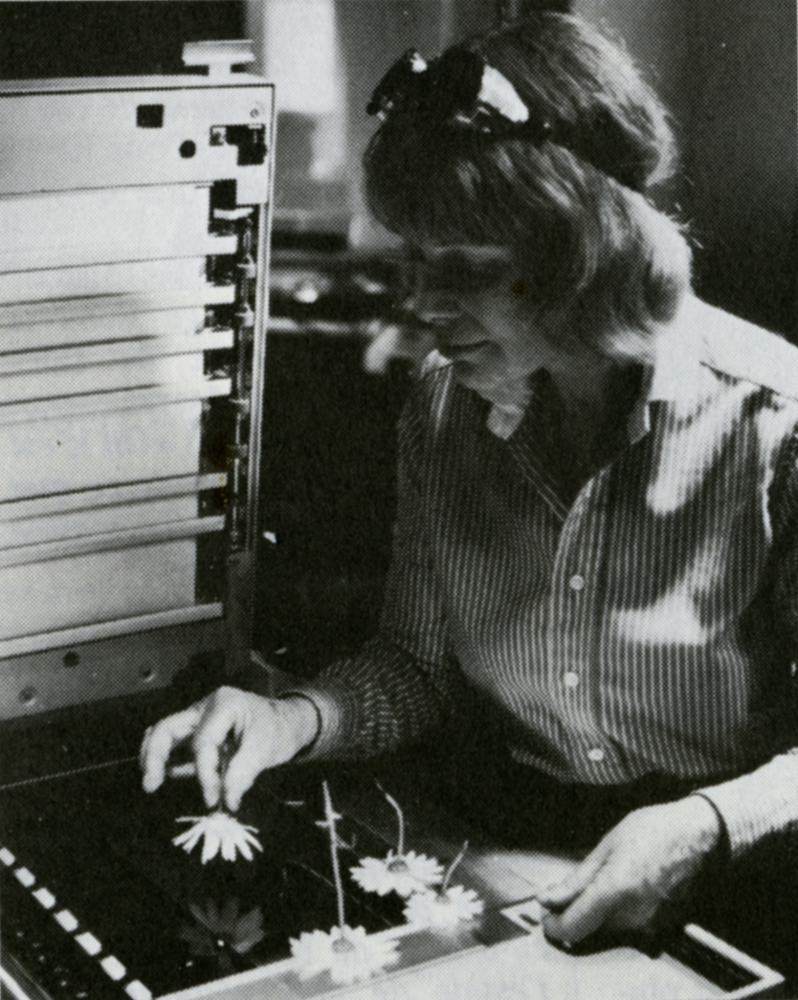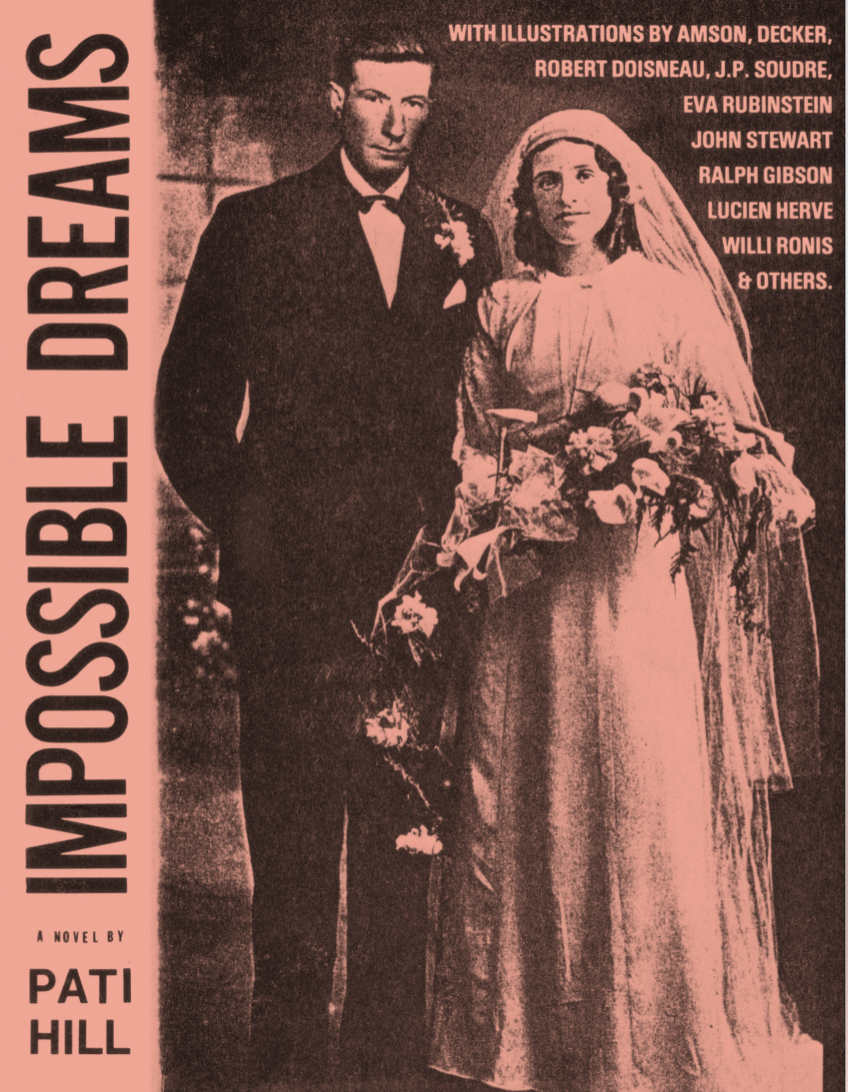
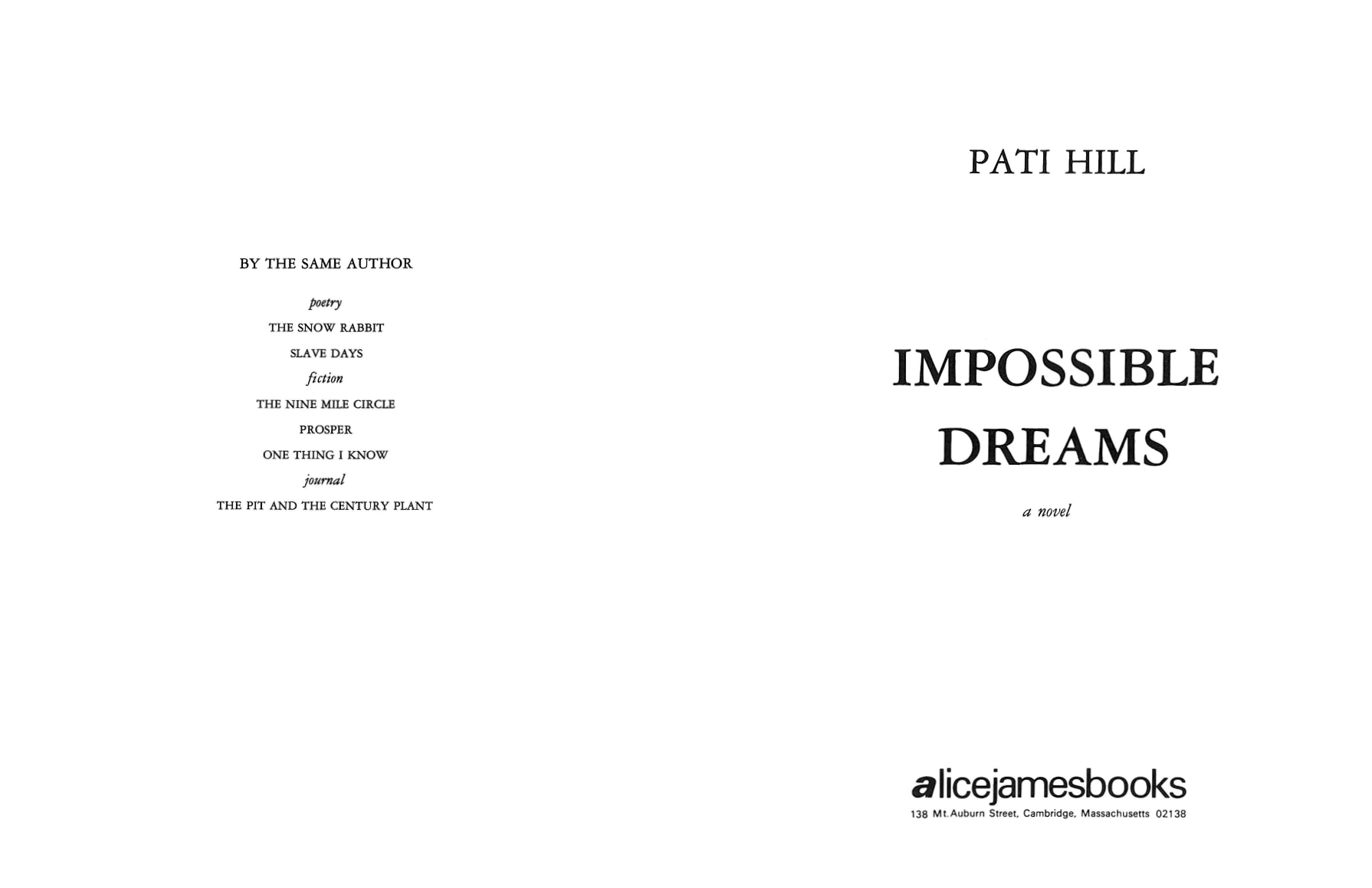
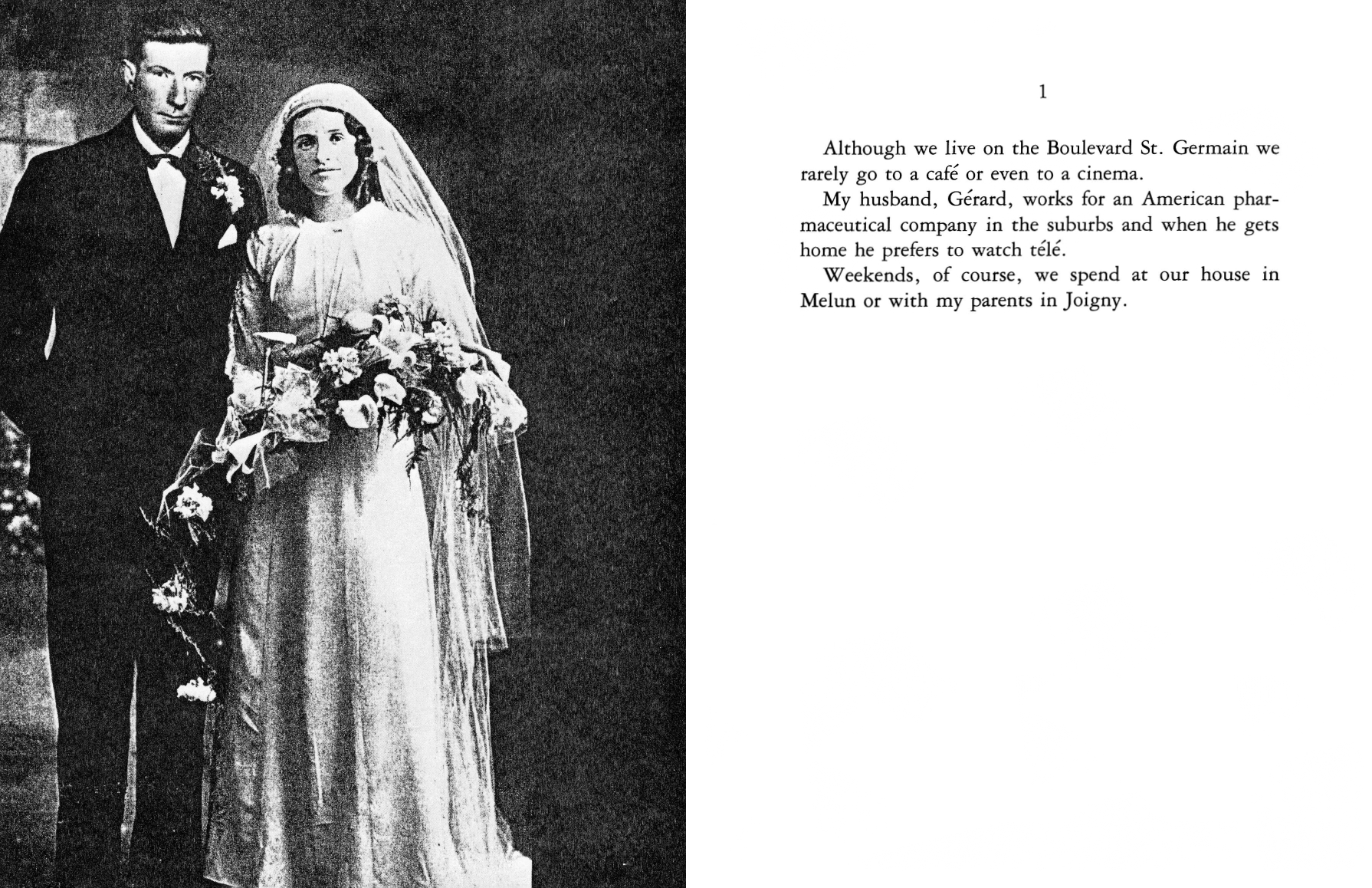
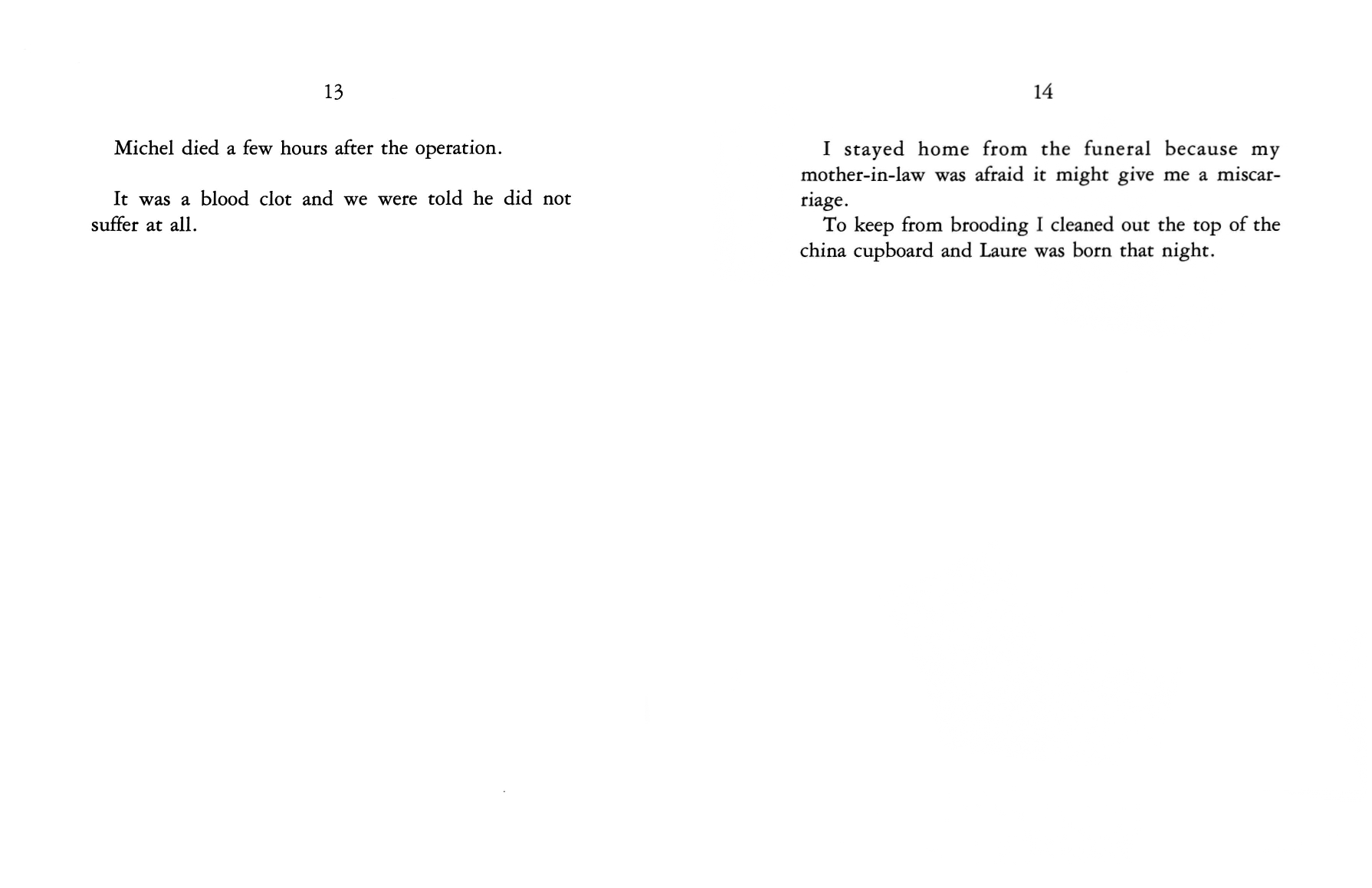
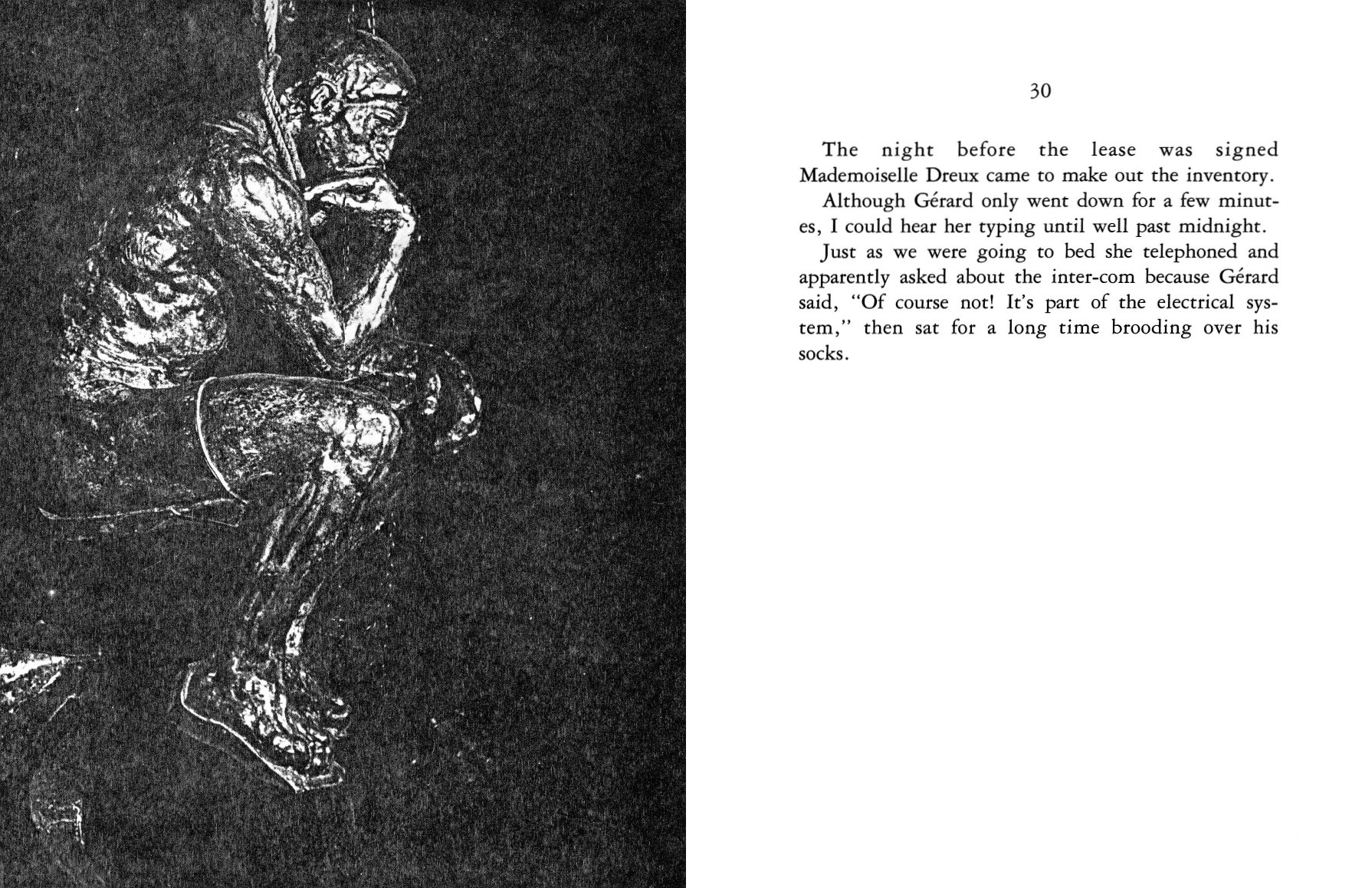
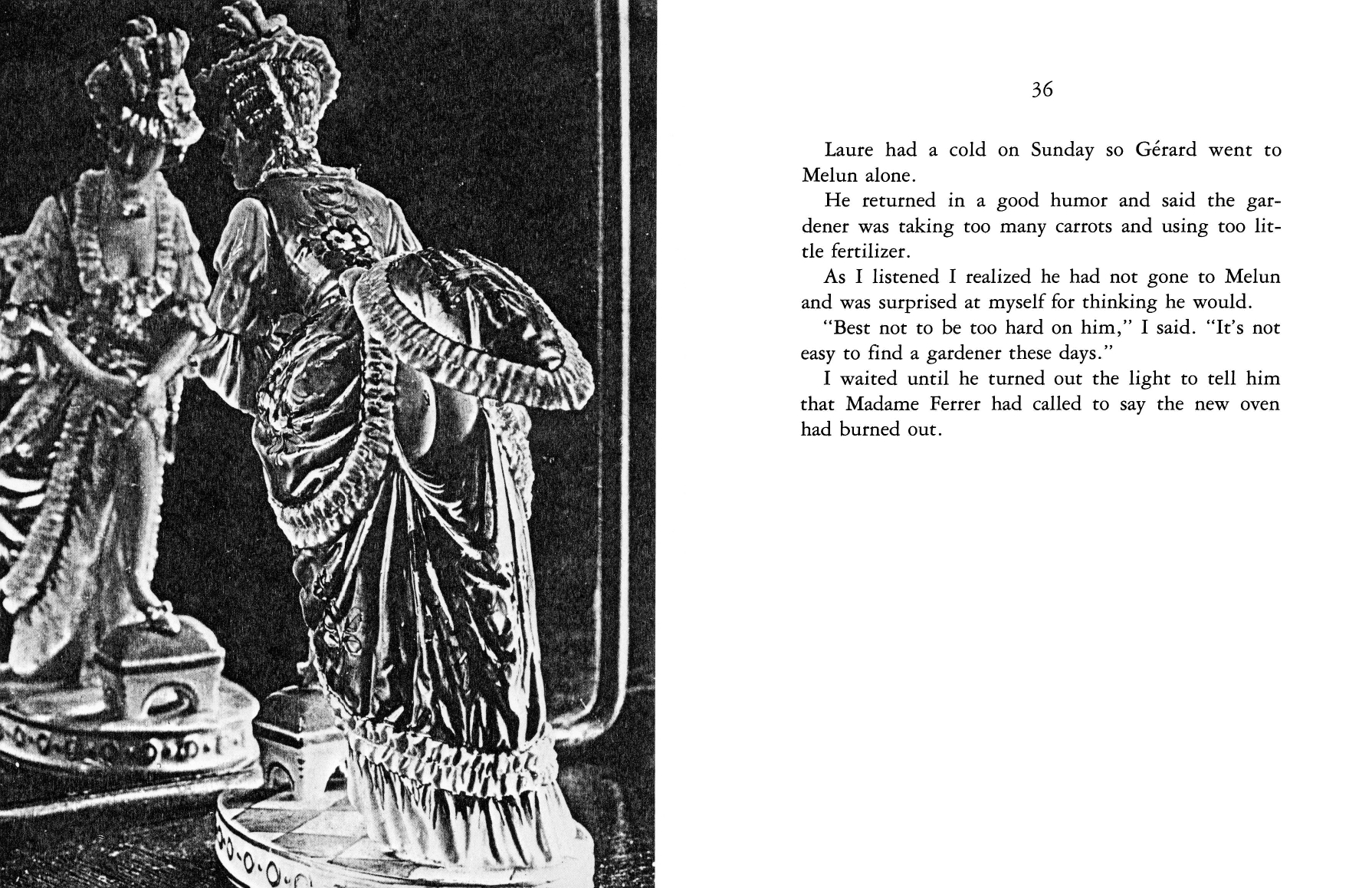

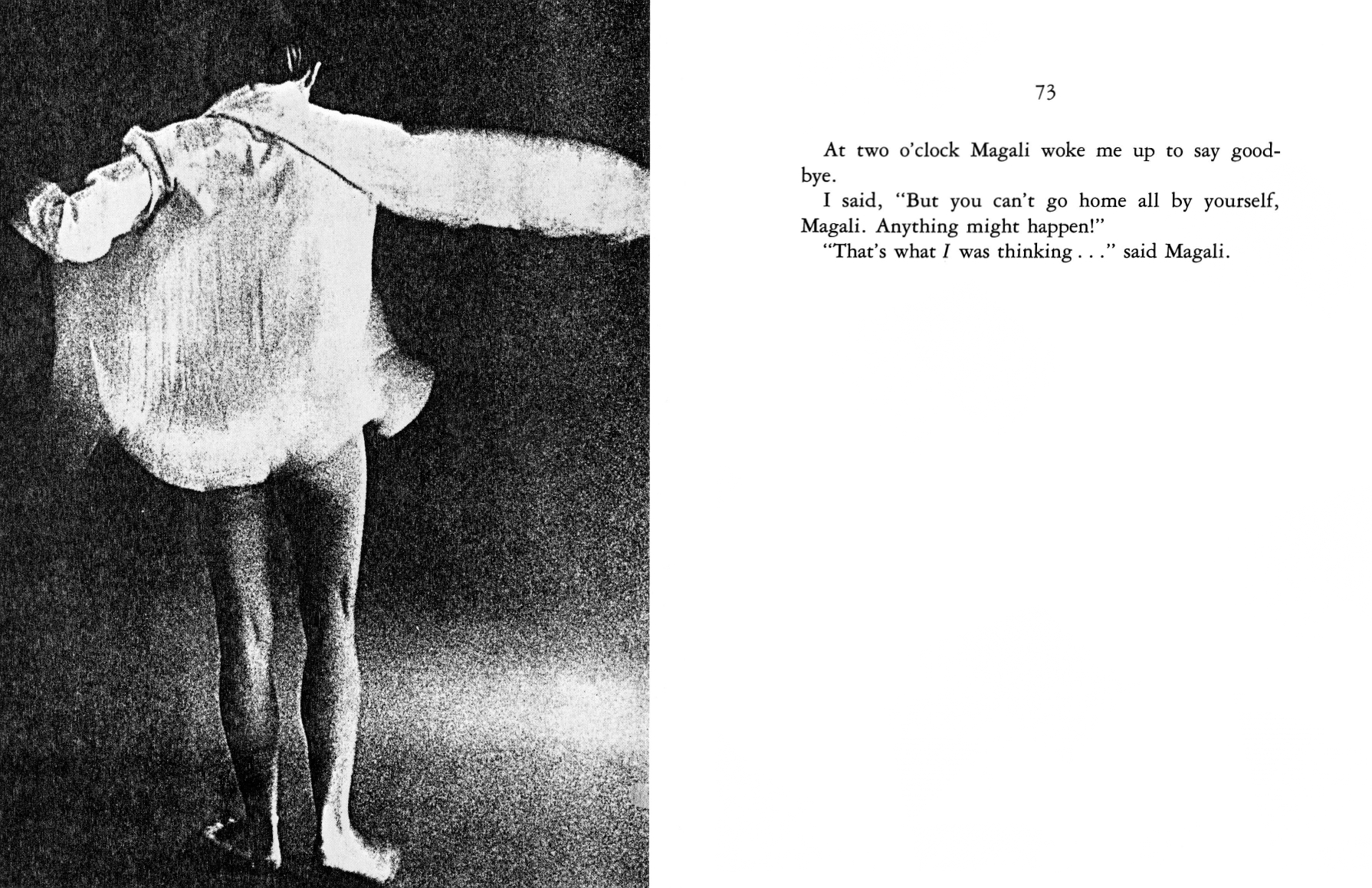

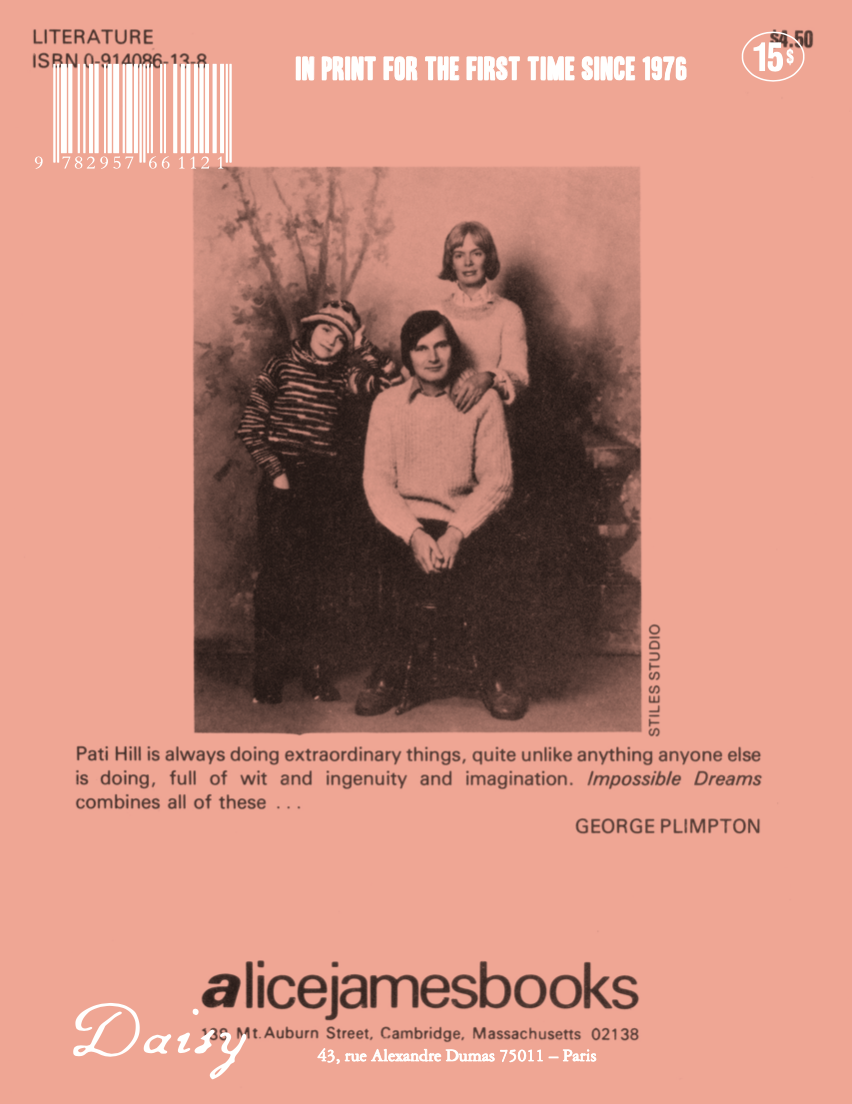

- A novel by Pati Hill
- Edited by Baptiste Pinteaux in collaboration with Ana Baliza
- May 2024, English, Literature
- 192 pp., 15.5 × 19.5 cm, softcover
- Edition of 800
- ISBN 978-2-9576611-5-2
- This publication is a facsimile edition of Pati Hill’s 1976 book, published by Alice James Books.
Pati Hill (1921–2014) was born in Ashland, Kentucky and died in Sens, France. Her practice as a writer—which flourished between 1951 and 1962—was reactivated and transformed in 1974 by her encounter with a photocopier. Experimentation with xerography turned Hill into a producer of pictures, exhibitions, and illustrated books, many of which paired her texts with photocopies of objects or appropriated photographs.
Impossible Dreams was Hill’s last published novel, printed by Alice James Books in 1976. Hill described the project as a “stopped movie” and its combination of text and image may constitute her most ambitious attempt to produce a work in which “the two elements fuse to become something other than either.” The novel, which Hill originally composed in French, employs prose that Boston Globe critic Marjorie Fletcher called “so dry in humor, that aridity becomes an added dimension and each frame (or chapter, none more than two pages in length) actually does freeze.”
In a letter addressed to the photographer Eva Rubinstein requesting reproduction rights, Hill wrote:
“My book is about a woman with a little girl and a husband who falls in love with a woman and a little girl and a husband and loses them all. […] It doesn’t sound very cheerful but it is mainly funny.”
It is indeed, but also deeply moving as she describes a woman struggling against social conventions to lead a fulfilling life.
The Pati Hill Collection, transferred to Arcadia University in 2017, consists of manuscripts dating from 1932, extensive correspondence and documentation, and four decades of artistic production.
Pati Hill (1921, Ashland, Kentucky–2014, Sens, France) left behind a literary and artistic output spanning roughly 60 years. After a short but successful career as a model, between 1953 and 1962 she published short stories and five books, many of which were initially excerpted in the Paris Review and met with critical acclaim. Hill published One Thing I Know in 1962 following the birth of her only child, a daughter. She was then forty-one years old and would later claim to have decided at that time to “quit writing in favor of housekeeping.” Although she published no work during the thirteen years that followed, Hill continued to write and in the early 1970s began her first experiments with the photocopier. Untrained as an artist, she started using the device as a tool to explore the relationship between image and text. In 1974, Hill published a collection of poems with the unambiguous title Slave Days, in which her first mature artworks appear: xerographs of household objects that seem to float in indistinct space.
Hill continued to employ the machine for 40 years, creating a considerable body of work comprising thousands of photocopies and texts, as well as drawings, etchings, and artist’s books, which she exhibited in France and the United States. Three years after her death in 2014, her complete archive was transferred to Arcadia University, Glenside, Pennsylvania, where a survey of the first decade of her xerographs and books was presented in 2016.
Long ignored, the work of Pati Hill now enjoys new critical interest. In the spring of 2020, her first posthumous exhibition in Europe was presented by the Kunstverein München and traveled to the Kunsthalle Zürich coincident with a trilogy of shows organized by Baptiste Pinteaux in 2020 and 2021 at the galleries Air de Paris and Treize in Paris and at Ampersand in Lisbon. Examples from her series Common Objects (1977–79) were acquired by the Whitney Museum of American Art, New York in 2019 and by the Centre Pompidou, Paris in 2021.
